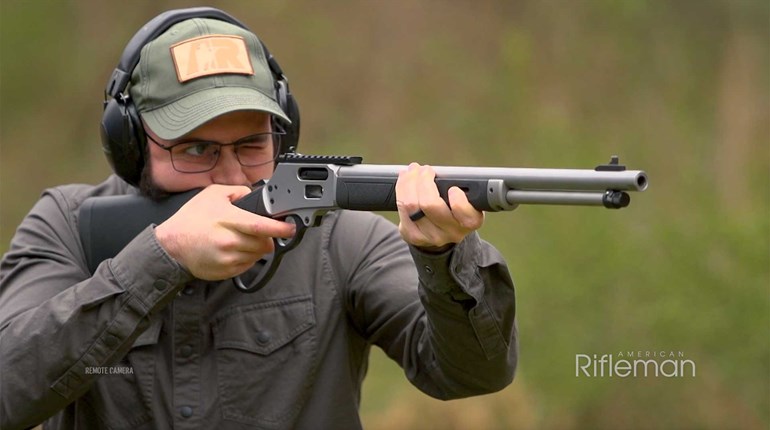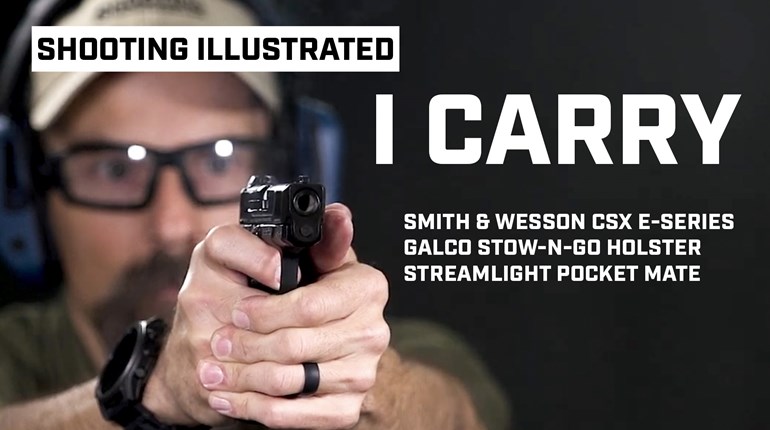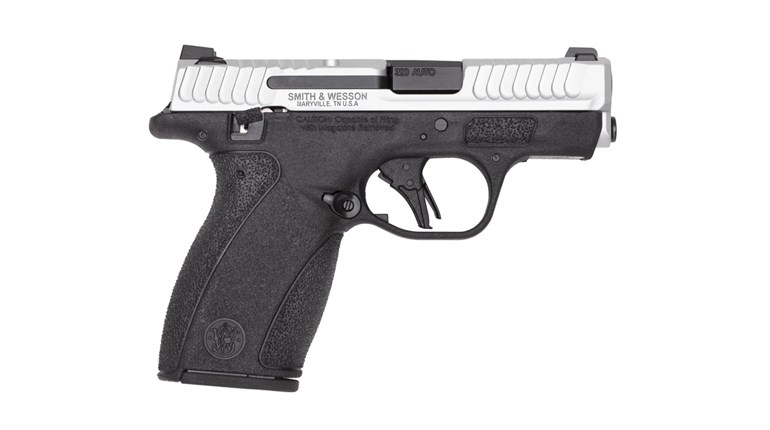
When he made the point, my buddy was speaking from a position of strength. Chuck Karwan—West Point graduate, champion heavyweight wrestler, combat platoon leader, Green Beret, outdoorsman, gunwriter—was a bear of a guy. He had an encyclopedic knowledge of firearms of all sorts. Karwan was particularly fond of digging into the development of handguns; sights, systems, breeching, etc.; from Paterson to present. He knew more about guns than anybody I knew, and working with him on several magazines was a pleasure. Karwan is gone now, but let’s look at one of his comments from years past that is still worthwhile.
In the lessons learned about pistols in World War II, Karwan opined that the military (and police) service pistol of the future would be a semi-automatic with: the punch of a 1911A1 in .45 ACP, the greater-capacity magazine of the Browning Hi Power in 9 mm and the DA/SA trigger action of a Walther P38. He was dead right on the semi-auto thing, as well the capacity and, for a good long while, at least, the action. Only the caliber remains undecided, but the .45 ACP is currently a distant second to the universally popular 9 mm.
When World War Deuce ended, the only sense of urgency in the military was getting everybody back home from the gawd-awful places they had been sent. As the military went from millions to thousands of personnel, we had millions of 1911A1 pistols and were officially satisfied with their performance. But, sometime in the late 1940s, a rumor began to circulate that our military was looking around for a new service pistol. At least some of this interest probably came from the fantasizing (they called it brainstorming) of certain officers in the Army and the (then new) Air Force.
Eventually, the military did announce an official interest, but the announcement fell short of a so-called “request for bid” situation. The armed services were extremely interested in the 9 mm cartridge, as it was a compact round that delivered adequate performance and happened to be the choice of many of our allies. In the recent conflict, we had a great deal of it fired at us, mostly from MP 40/Schmeisser submachine guns. Economic considerations prevailed, however, and the program went no further at that point in time. That’s when someone realized we were sitting on a huge supply of performance-proven 1911A1s. They were paid for, too.
The official interest was enough that Colt developed the first 9 mm semi-automatic pistol to be made in America. The Commander was also the first pistol to use aluminum alloys to reduce the weight. This arm was the subject of a recent “Fightin’ Iron” column. Other manufacturers were likewise interested in the gun of the future. The handgun that we need to look at carefully came from Smith & Wesson. In the 1950s, the firm was quite a forward-looking company, with a catalog chock-full of new pistols, as well as a broad assortment of double-action revolvers. From the same official interest that spawned Colt’s Commander, Smith & Wesson designed the Model 39.
This handgun’s place in the evolution of the semi-automatic pistol is huge, but let’s get a handle on the gun first. Recall Karwan’s emphasis on a DA/SA trigger system? The Model 39 had that and it was almost exactly the same as the Walther P38’s. The service pistol of much of the German Wehrmacht during World War II, the P38 had a versatile trigger system that permitted a user to load a round in the chamber and safely lower the hammer. To fire the first shot, the shooter sweeps the trigger through a long arc (double action), which fires the pistol. The slide cycles for extraction and ejection and leaves the hammer cocked. Trigger pressure for another shot comes with a short, light crisp trigger pull (single action). The safety is also a lever that returns the hammer to a downward position without discharging the chambered round.
Walther developed the first pistol to use this concept in 1929, but the P38 9 mm was the first DA semi-automatic that fired a true service cartridge. Smith & Wesson’s gun had the same kind of lockwork, but it used a much better system of breech-locking—a Browning-type tilting barrel. That system is currently the heart of virtually all modern semi-automatic pistols. The Model 39 had few growing pains and sold well for its maker. Although it had a single-column, eight-round magazine, it had excellent ergonomics. The Model 39 was first offered in 1954 and lasted until 1982. The dreaded curse of low-magazine capacity was addressed by an M39 upgraded with a 14-round magazine (circa 1971) called the Model 59. Ergonomics on this offering were just so-so. Early in the service life of the Model 39, it was obvious that there would be no huge military contract. This left Smith & Wesson’s exotic Model 39 to face the tough challenge of cracking the lucrative law-enforcement market.
I cannot begin to emphasize how entrenched the six-shot .38 Spl. revolver actually was with law enforcement. Older police officers and administrators were absolutely certain that semi-automatics in police holsters would lead to daily negligent discharges and be a source of liability.
Despite these fears, the use of Model 39 9 mm pistols began with the state troopers in Illinois and a few small departments out West. Before you could catch your breath, we were up to our hip pockets in guns from all over the world—and they were greater-capacity 9 mms. Some were of questionable utility and/or reliability, most were OK and a few were outstanding. But the trend changed again when an Austrian gun with a funny name came along with polymer construction, a DAO-like trigger and a whopper of a magazine. The trend, however, started with the Model 39, which was—and is—a fine hunk of fightin’ iron.






































